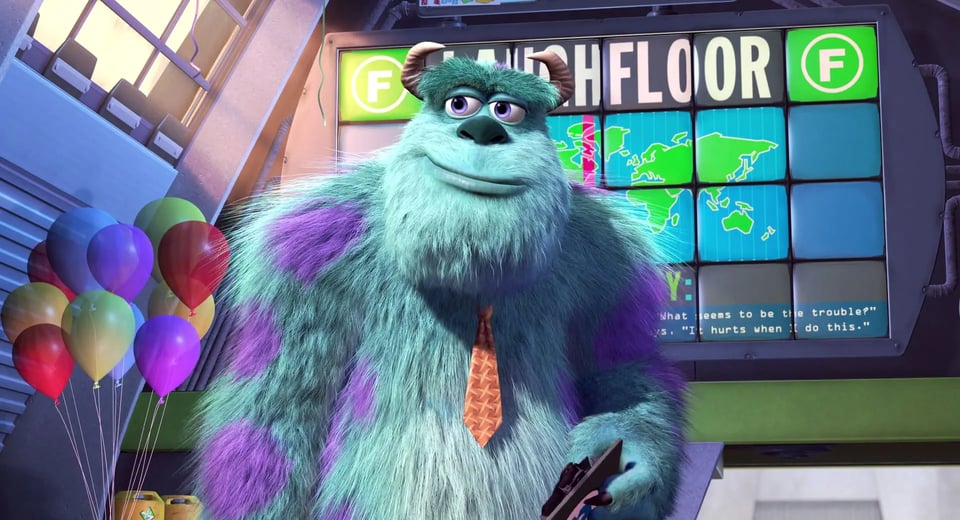How Pixar Made Their 'Top Scarer'... Not Scary

If there’s one thing you can learn about me from my online persona, it’s that Monsters, Inc. is my favorite movie ever made. I am absolutely obsessed with this film, and have been since my childhood. It feels like the more time passes, the more I grow up and understand more about both the filmmaking process and my taste in the medium (and the role Monsters, Inc. plays in shaping this), the more confident I feel in this take. It’s a film that exemplifies what I want out of a film, an exciting and engaging story with a strong emotional core, memorable characters that are easy to connect to, and frankly, a beat for beat perfect story.
For as much as I love, well, everything about Monsters, Inc., the more I’ve reflected on this film in recent years, the more I’ve come to understand that its greatest strength is its screenplay. Penned by Pixar veterans Andrew Stanton and the late Daniel Gerson, it’s the screenplay that gives this film the heart, excitement, and thoughtfully constructed plot that keeps me coming back even as my taste in film evolves and matures as I do. This is a script with no fat. Every scene conveys the exact amount of information it needs to in order to flow into the next seamlessly, never overstaying its welcome but never feeling like we’re rushing through plot elements or character arcs. There are so many angles at which I could look at this screenplay and gush about how wonderful I think it is. Seeing as how I could talk about this movie for hours every day without ever getting bored, I will absolutely be examining the various elements that make this screenplay so perfect in the months and years to come. But in this analysis, I want to focus on how good Stanton and Gerson are at characterization, and more specifically, the central contradiction at the core of our protagonist.
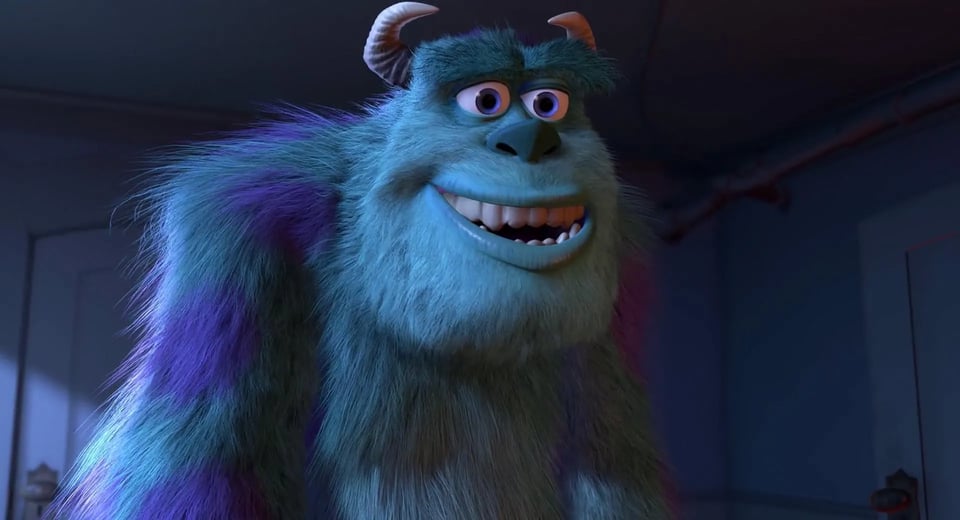
Now, if there’s one thing my love of Monsters, Inc. has revolved around, it’s my love of the main protagonist, James P. “Sulley” Sullivan. He is my favorite fictional character in all of media, without exaggeration. I adore him!! He’s such a grounding presence, a perfect foil to his life partner Mike Wazowski’s manic Looney Tunes energy, such a lovable, caring and empathetic protagonist. I’m always looking forward to rewatching this film and spending more time with this character, the textbook definition of a Good Guy. And this is all before we get into what the film he leads is actually about.
Monsters Incorporated is an energy company that supplies the city of Monstropolis with the power they need to live their everyday lives. That power being the screams of human children. Which monsters collect by going through door portals and sneaking into children’s bedrooms at night in order to scare them. It’s a nightmare factory, literally. And what’s worse, the lovable Sulley is also the best scarer in the whole company. It’s the central contradiction of his and most professional scarers’ character, the contrast between this beast haunting the nightmares of innumerable children worldwide, and the jovial and friendly guy he is at his core. The way Stanton and Gerson handle this contradiction is one of the many examples of the care placed into this script and a testament to their skills as writers.
Writing a children’s movie about a monster who scares children professionally, Stanton and Gerson were tasked with how to convey this aspect of Sulley’s character while also making him one that the film’s very young target audience is able to trust and root for. The way they handle this facet of Sulley is largely by telling us, not showing us, that Sulley is the scariest monster in the business. Before we even meet our protagonist, Monsters, Inc. begins with a cold open of a monster trying, and failing, to scare a child in a Scare Simulator. This prompts a response from CEO Henry Waternoose that Monsters Incorporated needs more monsters who are “confident, tenacious, tough, intimidating.” They need more scarers like Sulley! Before we even meet him, we already know that Sulley is the model scarer that all monsters should strive for, if his boss is any indication. In the opening minutes of the film, we learn not only this, but that our hero is just days away from breaking the All Time Scare Record, just days away from becoming the LeBron of traumatizing kids. Hell, Sulley is so good, Waternoose asks him to come to the scare simulator to give these trainees a demonstration from the most fearsome monster around.
This is in stark contrast to the Sulley we actually meet. For as much of an emphasis is placed on his role as the top scarer, we only know this because the characters are constantly telling us this. We do see Sulley work, but the writers are very thoughtful with what we actually see him do. Instead of placing us in a bedroom with Sulley roaring in a child’s face, we meet him at home, being woken up by his best friend, assistant, and personal trainer Mike. They go through a rigorous, and hilarious, workout session, complete with Sulley crouching down and back up again to scare kids in an imaginary bunkbed, chasing a makeshift “child” (made up of crude cutout drawings glued to a broomstick) around his apartment, and vigorously brushing his teeth because “Scary monsters don’t have plaque!” It’s a disarming sequence when compared to the way his boss built him up. Even when we do see him do his job, it’s in the context of a ridiculously cheesy TV commercial for Monsters Incorporated, and thus doesn’t have much impact beyond another showcase of his skills. By the time he and Mike are leaving for work, Sulley has been cemented as a friendly, hardworking, and trustworthy lead protagonist.
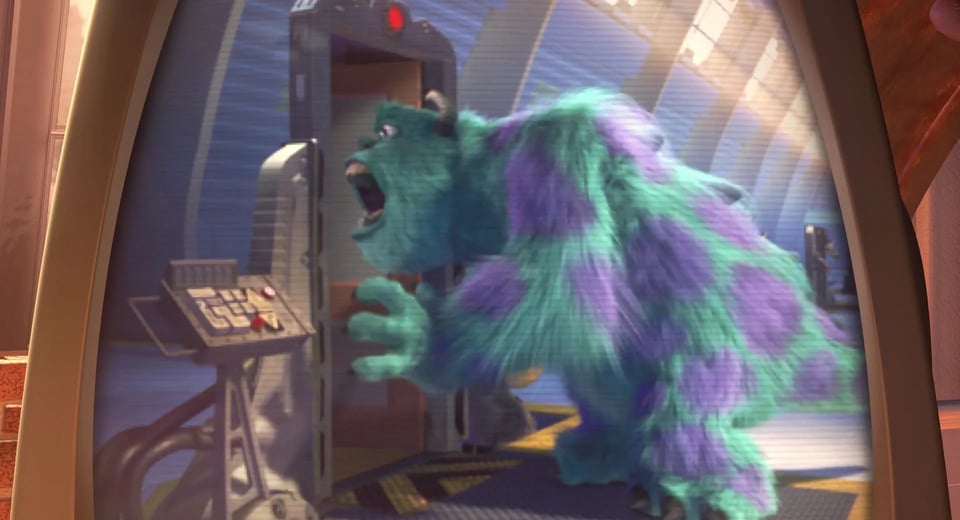
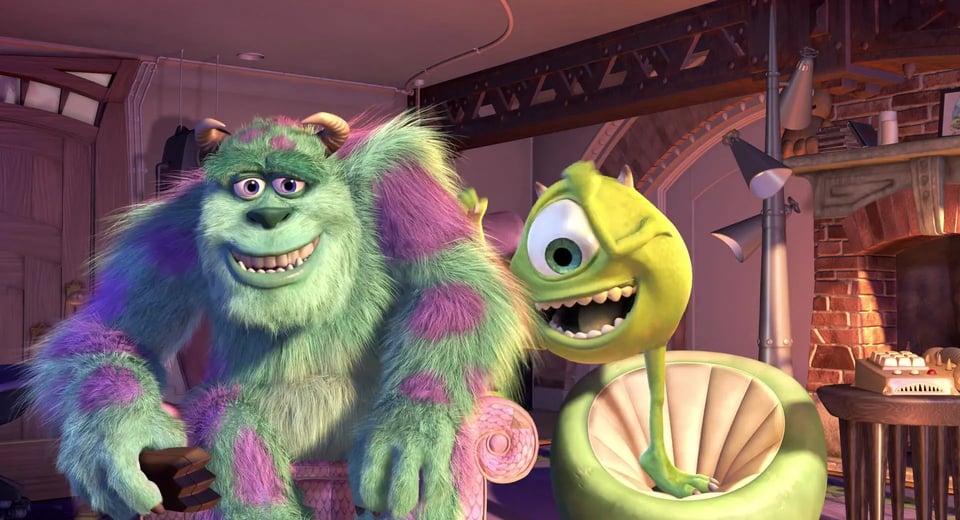
This continues as we follow Sulley throughout the film. There’s an extended sequence of him and his coworkers as they go about their day on the Scare Floor, but not once do we see a monster actually scare a child. We see them enter their rooms, we hear children scream, but it’s juxtaposed with a jazzy score, rhythmic and energetic filmmaking, and countless little gags that pepper this sequence (and the entire film). The Scare Floor is not a dark, frightening place, but another fun set piece in a film chock full of them. In fact, the Scare Floor becomes a recurring setting as the plot progresses, and not once is Sulley’s role as the top scarer emphasized in a serious way.
Once he accidentally lets a human child into the monster world, it’s easy to forget that Sulley’s a professional scarer at all. He’s not the existential societal threat in the film, it’s Boo, the human child he accidentally lets in while working late on the scare floor. Monsters believe that human children are deathly toxic, and as such, it’s the top scarer who’s afraid when Boo enters the monster world. She’s also not afraid of Sulley, seeing him as a big kitty, further allowing the audience to push Sulley’s role as the scariest monster in the game to the back of their minds. Once Boo enters the picture, Sulley and Mike’s professional lives take a backseat to the plot revolving around getting her back to the human world without getting caught, as well as the bond between Boo and Sulley that slowly becomes the emotional core of the film. The fact that Sulley is GOATed at scaring kids matters less and less as his priorities shift from breaking the scare record, to getting Boo home, to keeping her safe.
We return to the Scare Floor a few times in these attempts to get Boo back to her room. But again, since it’s not where his priorities currently lie, we never see Sulley even attempt to do his job. The first time we return is when Mike finds a random door to try to get her out of their haaaaair as quickly as possible, a comedic scene full of some of the most iconic gags in the film. The second time is when Randall, who is Boo’s regular monster and the reason her door was on the scare floor the previous night in the first place, provides Boo’s door for Mike and Sulley while the Scare Floor is otherwise empty. It’s already been established at this point that Randall is looking for Boo as well, and Sulley, who at this point has grown to care for Boo almost paternally, is justifiably suspicious. This protective, fatherly monster is a far cry from the fearsome beast we’ve been told Sulley is when he’s working. Stanton and Gerson have told us about his impressive, terrifying skills as a scarer, but have shown us the sweet and caring monster Sulley is at heart.

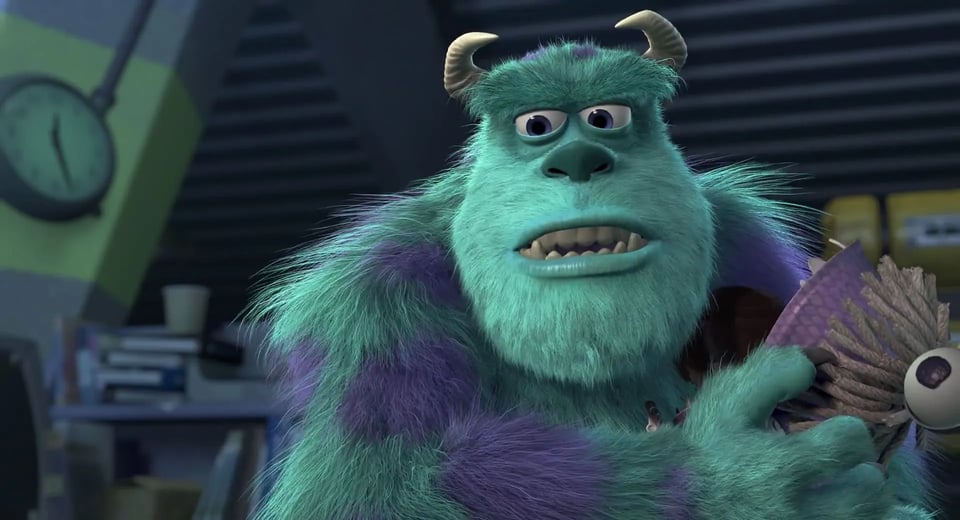
At this point we are nearly an hour into the film. Through a comedic mix-up, Mike and Sulley (and the audience) have learned that Randall has secretly built a “Scream Extractor”, a truly nightmarish invention, and plans to test it on Boo. Panicked and unsure of what to do about this revelation, Sulley decides to come clean to Waternoose, who’s already expecting him in the Simulation Room. It’s here where Stanton and Gerson finally address the elephant in the room. Sulley is not only the lovable hero of this story, but again, the scariest monster at the company. Waternoose is expecting him to give a demonstration, showing these trainees what peak performance looks like, and he won’t hear Sulley’s pleas to let him explain the situation. Sulley can’t back out of this. The lights dim, the simulation begins, and for the first time in the film, we see the Top Scarer show off his skills. And it isn’t pretty.

Sulley roars right in the robot child’s face, and in an instant, we’re reminded that not only have we been watching the company’s best scarer this whole time, but of the traumatic effects his job has had on countless children. After sheltering us from the reality of his line of work for nearly an hour, we finally see the harm this gentle giant has been unknowingly causing children for his whole life. Boo, who had been standing just feet away, bursts into tears and runs off. For the first time we, along with Sulley, see the after effects of scaring children. Boo may not be scared of Sulley in general, but the hurt and betrayal that seeing him in action has caused her is evident. As Sulley attempts to comfort the child he’s come to love so deeply, he stares at the playback of his scare in horror, his menacing snarl and sharp claws in a stark contrast to the innocent terror on Boo’s face. For the first time, both Sulley and the audience are forced to confront the contradiction at his core head on. Now that he’s harmed a child he actually knows and has grown to care for, he realizes just how many children he does this to on a nightly basis. It should be no surprise that we never see Sulley scare a child ever again.
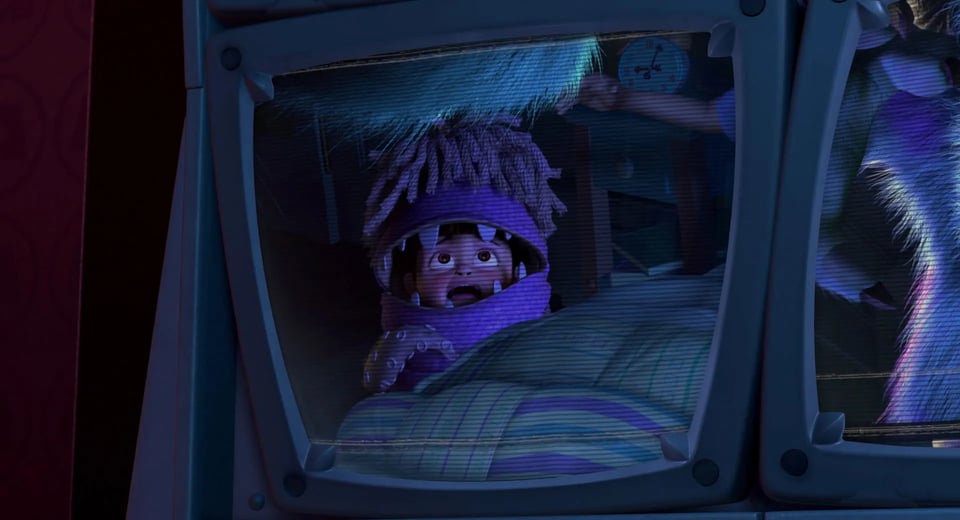

It’s this careful handling of Sulley’s character that makes this scene so effective. Stanton and Gerson knew not to play this card too early, assuring that Monsters, Inc.’s young audience would grow to love Sulley far before they had the chance to fear him. For 99% of the film, he’s a giant teddy bear, seemingly impossible to be afraid of. Holding back on showcasing his true abilities as a scarer allows the scene in the simulation room to hit just as hard for the audience as it does for Sulley and Boo. We never saw Sulley do his job, we never had to come to terms with this version of Sulley being the same affable monster we’ve grown so attached to already. Now that the audience and the characters have seen the pain scaring children has caused firsthand, the rest of Sulley’s character arc locks in place. He is deeply affected by Boo’s reaction. It permanently changes his priorities, unable to go back to scaring or even care about returning back to his normal life. All he can care about now is getting Boo home and keeping her safe in the process. It’s this change in his mindset being cemented that causes his split and eventual reconnection with Mike, the wild chase scenes with Randall and Waternoose (surprise! He was in on it!), his heartfelt goodbye when he gets Boo back to her room, and his ability to get Monsters Incorporated to switch to the more ethical power source of laughter.
This is just one piece of the very large puzzle that makes Monsters, Inc.’s screenplay so expertly written. The care that’s shown to just this one aspect of Sulley’s character is given to every scene in this wonderful, wonderful film. It’s that level of care that makes Monsters, Inc. such a beloved classic nearly a quarter century after it was released, and it’s what makes me want to continue endlessly revisiting and analyzing this film for years to come.
